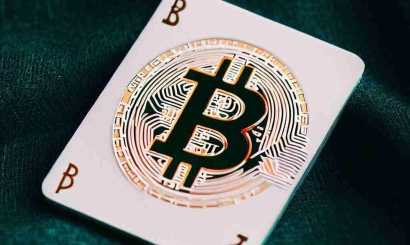The collapse of banks in the United States. How crypto traders took advantage of the situation
The collapse of three major U.S. banks triggered a chain of events in the cryptocurrency market. We tell you who made money on it
Just three weeks ago, in the last week of February, Byrne Hobart, author of The Diff, a popular economics newsletter with 48,000 subscribers, issued a warning - he described the likely scenario of Silicon Valley Bank (SVB) collapse. Hobart pointed to the inconsistency in the market valuation of SVB's assets, and the fact that the bank has been insolvent for at least one quarter, according to published balance sheet data.
Ordinary subscribers in the comments called it nonsense and did not believe the bank was insolvent. On Friday, March 11, SVB went under, unable to keep up with the influx of people who wanted to withdraw their deposits, making it the second-biggest bank failure since the 2008 meltdown in the United States. The event created a backlash and a chain of consequences for businesses and the banking system as a whole, but there were those who were lucky enough to take advantage of non-public information or opportunities that the market offered.
The theory that the Hobart letter may have been a precursor to the collapse of SVB began to spread quickly on social media. As the lead author of another popular business newsletter, Evan Armstrong, claimed that "every venture capitalist he knows" was subscribed to The Diff. Representatives of at least six major funds investing in crypto-businesses or directly in crypto-assets confirmed to The Block reporters that, even days before the bank collapse, they recommended portfolio companies to withdraw assets from SVB as soon as possible. These funds include Pantera Capital, which focuses solely on the crypto market, and Peter Thiel's Founders Fund, which earned more than $1.8 billion on the rise of bitcoin.
According to estimations of Bloomberg experts, traders earned about $0.5 billion on short positions on the collapse of SVB stocks, however, due to its peculiarities, the cryptocurrency market opened opportunities that are unavailable on the traditional stock market by definition. It is traded around the clock, exchanges independently decide on asset listings, and all trades are available for monitoring in a blockchain - a public registry of cryptocurrency transactions, at any time available for monitoring by researchers and analytical services.
Working with no days off
The most notable consequence for the crypto market was the temporary loss of parity against the U.S. dollar for the second-largest USD Coin (USDC) staple, which is issued by Circle in partnership with the Coinbase exchange. When Circle management confirmed that the company held $3.3 billion in SVB accounts to secure USDC (about 8% of reserves), holders of the stablecoin began withdrawing funds from it en masse, converting them to dollars or other available crypto-assets.
The lack of liquidity caused the USDC exchange rate to dip below $1 and momentarily drop to $0.86. On the night of March 11, Circle closed all available channels to withdraw USDC into dollars, including through the Coinbase exchange, fearing an even greater drawdown. The company attributed the decision to a "bank holiday."
"There's also the panic factor." How the SVB bank collapse affected the crypto market
Believing that Circle's reputation and financial strength would eventually help restore the USDC to the dollar, traders and funds began to buy stablecoin at a discount, expecting to make a profit of about 10% the moment the USDC returned to a "stable" rate. As early as March 11, USDC's aggregate trading volume against the U.S. dollar reached an all-time high, with the Stablecoin exchange rate exceeding $0.9, but not recovering due to the ongoing massive withdrawal of assets.
The largest cryptocurrency exchange, Binance, was the first to open USDC trading in pairs with other stablecoins. Out of context, this decision might have seemed absurd - the exchange rate of either of the stablecoins is $1, and trading one of them in pairs with the other would seem to make no sense. However, the detachment of the USDC from the dollar has provoked a strong rush that benefits the trading floors.
BitMEX was the first to launch trading in perpetual USDC futures with up to 10x leverage. Almost all major trading floors followed suit on the same day. On ByBit alone, the trading volume of a similar instrument exceeded $1.2 billion on March 11. Binance added perpetual stablecoin futures with leverage up to 30x, and Huobi - up to 50x.
Decentralized platforms also saw a jump in trading turnover. Uniswap recorded a turnover of $12 billion from March 11 to 12, a record for a decentralized exchange. Curve had $8 billion, and one of the largest liquidity pools on the platform was momentarily emptied due to an influx of USDC trades.
Uniswap and Curve Finance are decentralized financial protocols for exchanging and trading crypto-assets based on smart contracts.
A liquidity pool is a smart contract containing locked cryptocurrencies that have been provided by platform users and acts as an automated market maker on a decentralized exchange
The USDC discount offered ample opportunities to make money on crypto-assets arbitrage. A researcher under the pseudonym Lookonchain gave an example of a transaction chain of one "whale" (over $200 million in crypto-assets on the Ethereum blockchain), each step of which can be tracked in the blockchain.
"Whale used Ethereum coins (ETH) and stETH tokens (a derivative asset of the liquid stacking service Lido) as collateral in the DeFi-protocols Aave and Instadapp to borrow $28,577,700 in USDT, the largest capitalized stablecoin from Tether, whose rate has remained pegged to the dollar. He then exchanged the borrowed USDT for USDC for a discount of $29,961,238 in USDC. When the USDC rate recovered, the trader returned the deposit, making a profit of about $1.3 million in less than two days.
On the night of March 13, the U.S. government promised to fully reimburse SVB deposits, early in the day Circle announced that it had taken several measures to protect USDC reserves, and the stablecoin rate recovered, despite the fact that on the same day, its capitalization decreased by another $1.7 billion.
Getting out in time
According to The Wall Street Journal sources, the U.S. Department of Justice and the U.S. Securities and Exchange Commission (SEC) have initiated an investigation against SVB, which is also looking into the stock sales that its employees made days before the bankruptcy.
The bank collapsed almost simultaneously with two others, Silvergate and Signature, both considered loyal to the crypto business. The former was serving more than 1,500 crypto companies, and at market peaks in 2021, its deposits were growing by billions of dollars and shares were soaring by 1,500%.
Dollars are gone from the crypto market. Who will replace Silvergate Bank
Citing SEC filings, Blockworks reporters estimated that the bank's top executives made more than $100 million from the sale of their shares, selling them during a period of record growth in bitcoin and other cryptocurrencies in 2021.
As for Signature, according to the bank's chairman, there was no real objective reason for its closure, and he called the U.S. authorities' decision to liquidate it "a very strong anti-cryptocurrency signal." According to Bloomberg, the bank faced a criminal investigation before its collapse because of its cryptocurrency operations. Circle had been using the services of both banks, but management said the company had already found a new banking partner.
- Signature Bank board member cites signal to the cryptocurrency market as a reason for closure
- "Penalties will definitely continue": what else the SEC will punish the cryptocurrency market
- "There's also the panic factor." How the collapse of SVB Bank affected the crypto market
- Meta decided to discontinue support for NFT on Instagram and Facebook
- USDC Stablecoins worth $1.7 billion was withdrawn from circulation in one day on March 13
- Binance will stop depositing and withdrawing funds in pounds for British customers
- More than 30 global brands will participate in Metaverse Fashion Week




_410x245_00e.webp)


